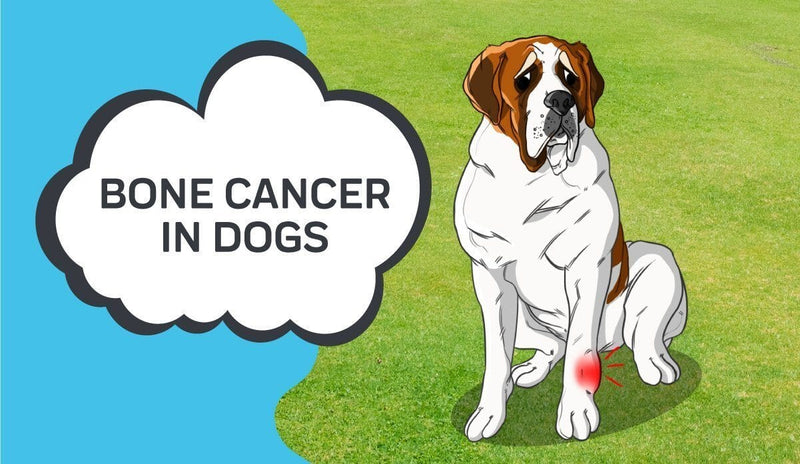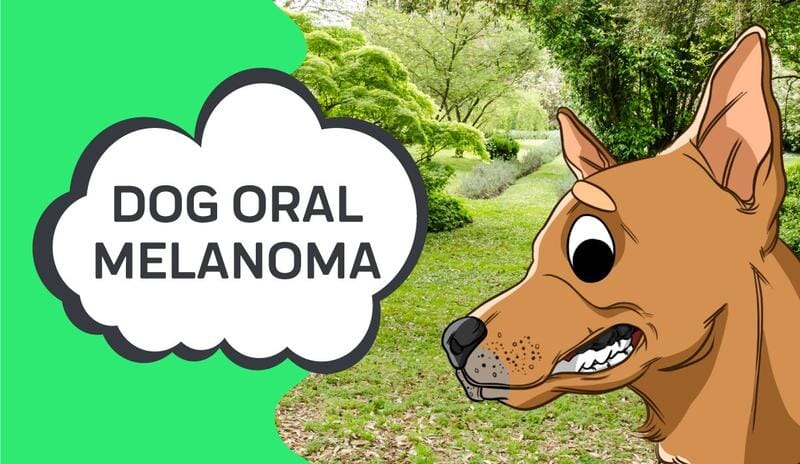- Types of Squamous Cell Carcinoma in Dogs
- Risk Factors of Squamous Cell Carcinoma in Dogs
- How Much CBD Should I Put In Dog Treats?
- How to Treat Canine Squamous Cell Carcinoma

Cutaneous squamous cell carcinoma is the general name for squamous cell carcinomas in general. Also known as actinic keratosis, cutaneous squamous cell carcinomas are most notably recognizable based on the tumors that arise as a result of the buildup of cutaneous squamous cell carcinoma cells.
Cutaneous squamous cell carcinomas in dogs are a form of skin cancer that affects the epidermis and dermis layers of the skin. Made up of squamous cells that mass produce and grow more rapidly than normal. As such, in order for this disease to grow, healthy squamous cells have to be present in the first place.
As a result, the most common places for cutaneous squamous cell carcinomas to appear are behind the ears, on the back of dogs, in the nail beds, around the nail beds, between the pads of the dog's paws, near the abdominal region, and all around the nose of dogs. It typically starts out as a small tear or scratch in the skin, which is medically referred to as a lesion.
However, since all individual cases of cutaneous squamous cell carcinoma in dogs are unique, so what happens after the first lesion appears will depend on the specifics of your dog's situation. The original lesion is the detail that signifies that your dog likely has the disease, but what happens from there will dictate the type of SCC that your dog has.
You might be wondering what the different kinds of cutaneous squamous cell carcinomas are, so let’s take a look at some of the most common types of SCC in dogs!
Types of Squamous Cell Carcinoma in Dogs
All types of cutaneous squamous cell carcinomas are marked by tumors on the skin. One of the major differences between these squamous cell skin tumors is their location on the body. Let’s take a look at two types of squamous cell carcinomas in dogs: Oral and Subungual squamous cell carcinomas
Oral Squamous Cell Carcinoma

Unfortunately, the longer squamous cell carcinoma goes untreated, the higher the chance of the cells affecting the bones as well. It can metastasize rapidly when it's located near the nose or in the mouth, but when the cancerous cells are in the tonsils, the growth rate of oral squamous cell carcinoma is a bit slower. Based on the name alone, this is clearly a cancer of the mouth. Usually, the disease is located in the gums, under the tongue, and deep within the tonsils of dogs. But what isn't as obvious is the fact that oral squamous cell carcinoma can also be found in the throat as well.
It’s important to note that this disease is not the same as papillomavirus. Even though both these problems are located in and around the mouth, oral squamous cell carcinoma is still its own separate condition.
Subungual Squamous Cell Carcinoma
Remember our brief mention of SCC and lymph nodes? Subungual squamous cell carcinoma specifically infiltrates the nodes and spreads throughout the body by traveling within infected lymph nodes. This will likely start to affect your dog's immunity to certain other ailments as the lymphatic system makes up a part of the immune system.
Risk Factors of Squamous Cell Carcinoma in Dogs
When you know the risk factors of squamous cell carcinomas, you can not only come to the conclusion that SCC might be the problem, but you can make an effort to avoid situations that increase the risk of your dog developing the disease.

How Much CBD Should I Put In Dog Treats?
Before treatment is possible, the vet must first diagnose your dog.
There are various ways by which professionals diagnose your dog with this issue, some of which include…
- Biopsies
- Blood count
- CT scans
- Fine needle aspirations
Biopsies
Biopsies provide insight into the type of tumor development your dog is facing. Sometimes, vets will feel comfortable cutting the tumor itself and analyzing the cells that are inside of it. Other times, it’s easier for the professionals to look at the surrounding lymph nodes in order to further understand the situation because it’s not uncommon for cancerous cells to infiltrate the nodes around them.
Blood Counts
Complete blood counts might be ordered by the vet as well. Knowing the exact number of blood cells, both red and white will give the vet insight into whether the cancerous cells are the result of squamous cell carcinomas or something else altogether.
CT Scans of Skin Tumors
CT scans are imperative for finalizing the tumor location. Not only is this part of the process behind diagnosing squamous cells, but it also makes it possible for vets to understand which type of SCC the dog has as well.
Fine Needle Aspiration
This is a specific kind of biopsy. The process involves placing a needle into the skin tumor and the needle is used to extract the cells for the sake of closer analysis.
How to Treat Canine Squamous Cell Carcinoma

That being said, some of the most common treatment options for canine SCC include… No matter the type, cancer cells are always a daunting diagnosis to face. Thankfully, SCCs are not always fatal. Skin cancer can be treated successfully, especially when it's spotted and addressed early on in the process. The exact treatment options that your dog will receive is going to be dependent on your vet’s decisions and the severity of the tumors.
- Photodynamic therapy for tumors
- Surgical removal of SCC tumors
- Cryosurgery therapy
- Chemotherapy
- Radiation therapy
Photodynamic Therapy for Dogs with Squamous Cell Carcinoma
This type of therapy utilizes UV light as a therapeutic measure. Usually, it is used when the tumors are located on delicate parts of the body, such as tumors around the nose or squamous cells that congregate around the eyes.
The use of UV light has been shown to strongly benefit the skin. Not only does UV light assist in the treatment of canine skin cancer, but it also plays a role in the healing and recovery processes as well.
Surgery for Excisions and Removal of the Tumor
Surgical removal of the skin tumor is one of the most effective ways to treat SCCs in dogs. By getting rid of the tumor completely, vets can clear out as many cancerous cells as possible and then figure out how to treat any cells that remain after the skin tumor is removed.
Surgical removal of tumors isn't always possible because some tumors are too big to qualify for surgery, but your vet will let you know if surgical removal is an option for your dog! Location is also a big factor in whether or not surgery is on the table for your pet.
Cryosurgery Therapy for SCC
The polar opposite of photodynamic therapy, cryosurgery is a method by which professionals apply very low temperatures to a squamous cell tumor. The significantly cold nature of cryosurgery is intentionally designed to kill cancer cells while also cooling the area around the cancerous cells for the sake of the patient’s comfort as well, which is your dog, in this instance.
Radiation or Chemotherapy for Squamous Cell Carcinoma
Chemotherapy is often coupled up with radiation therapy for cancer treatment. Usually, radiation therapy follows a successful chemotherapy experience. Radiation therapy utilizes UV light to further kill any cancerous cells that survived the chemotherapy treatments.
Sources:
Squamous Cell Carcinomas in Dogs
Radiation Therapy of Canine Nontonsillar Squamous Cell Carcinoma
Squamous Cell Carcinoma in the Prepuce of a Dog

LEARN MORE












 Advanced Mobility Support Chews for Dogs
Advanced Mobility Support Chews for Dogs All Natural Oatmeal & Honey Shampoo + Conditioner for Dogs
All Natural Oatmeal & Honey Shampoo + Conditioner for Dogs CBD Dog Treats
CBD Dog Treats




